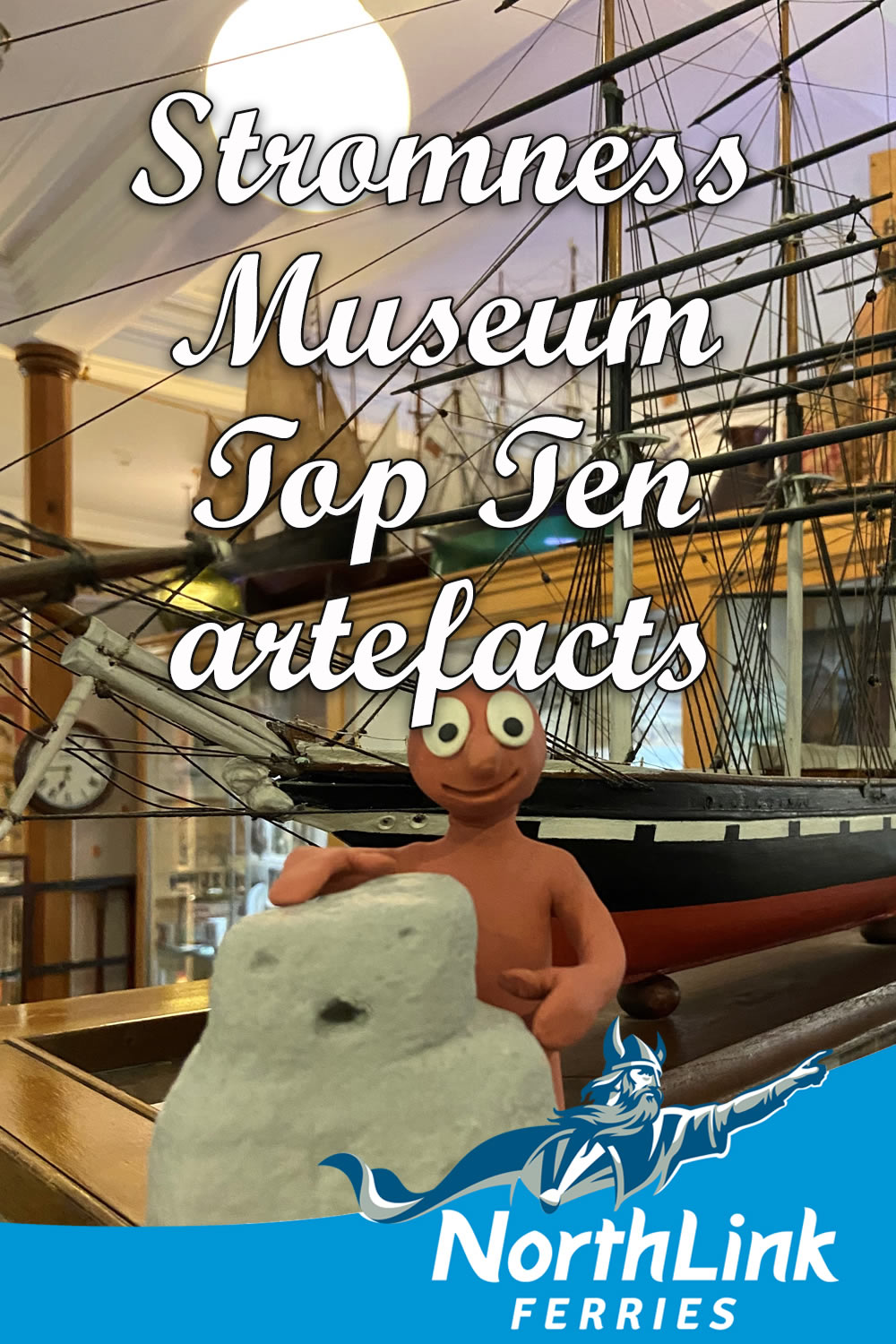Top Ten artefacts in Stromness Museum
Stromness Museum is an independent charity, and is Orkney’s oldest museum. It was established in 1837 by the Orkney Natural History Society with the aim of promoting natural science, to preserve local history and to offer an enjoyable, educational and informative experience to as large a range of people as possible, and this is still the case.
A blacksmith by trade, Foubister decided to make himself a new fiddle from tin in order to withstand the rigours of life on board a herring fishing boat
Permanent displays include the Victorian Natural History Gallery, Buddo and Skara Brae , Dr John Rae’s Arctic expeditions, Orkney and the Hudson’s Bay Company, the scuttling of the German High Seas Fleet, Arctic Whalers and maritime, social history and world cultures. This years summer exhibition focuses on geology and celebrates two geologists with Orcadian Connections, Ted Kellock and Professor Mathew Forrester Heddle. ‘Mineral Minds: Orkney Geologists under the Microscope’ will run from May to October 2024 and check out the Stromness Museum website for special talks and events relating to this.
We’ve compiled a list of our 10 favourite things on display in Stromness Museum. We look forward to giving visitors a warm welcome and presenting the remarkable history of Stromness and its pioneering people.
For opening times, accessibility information and admission charges, see the Stromness Museum website.
1. Buddo – a Neolithic figurine
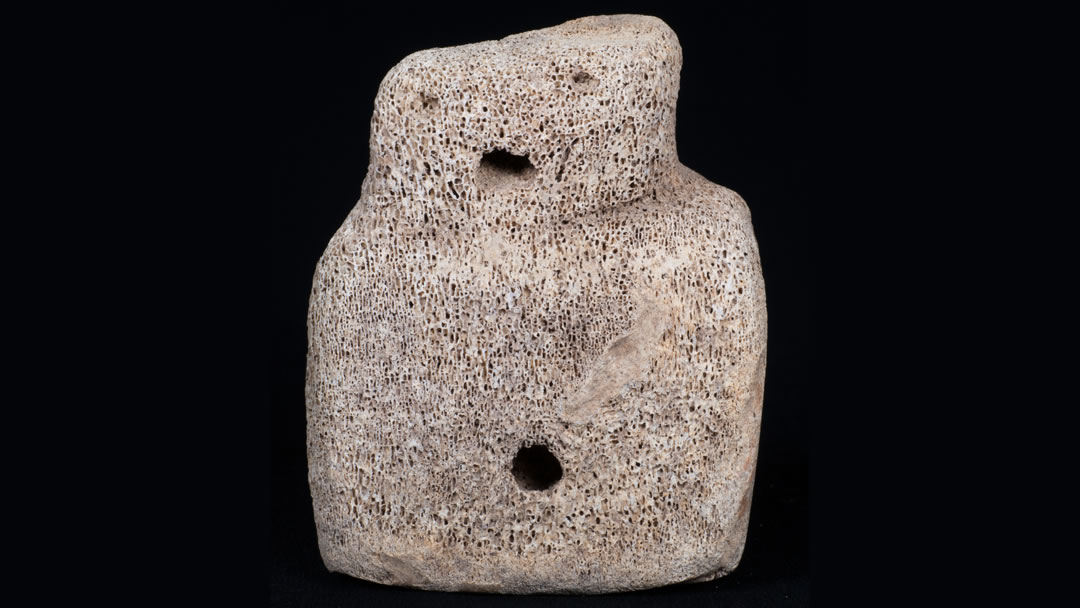
‘Buddo’ (an Orcadian word meaning ‘friend/mate’), is a youthful-looking figure that is actually over 4,000 years old, dating to circa 2900 to 2400 BC. Buddo is carved from whalebone and is just one of a handful of known figurines from the whole of the British Neolithic. The reason for Buddo’s creation, like their gender, is a mystery and theories range from Buddo being associated with ritualistic use, to simply being a children’s toy.
Buddo was originally found in a stone bed in Skara Brae in the 1850’s. After its donation to the Museum in the 1930’s, Buddo hid in storage until 2016. Buddo has since made up for lost time with appearances in the news, children’s books and on television in BBC Scotland’s ‘My kind Of Town’. A 3D printed replica of Buddo also made a new friend in Morph recently, when he visited the Museum with Aardman Animations founder Peter Lord.
2. Daniel Defoe’s first edition of the Pirate John Gow c1726
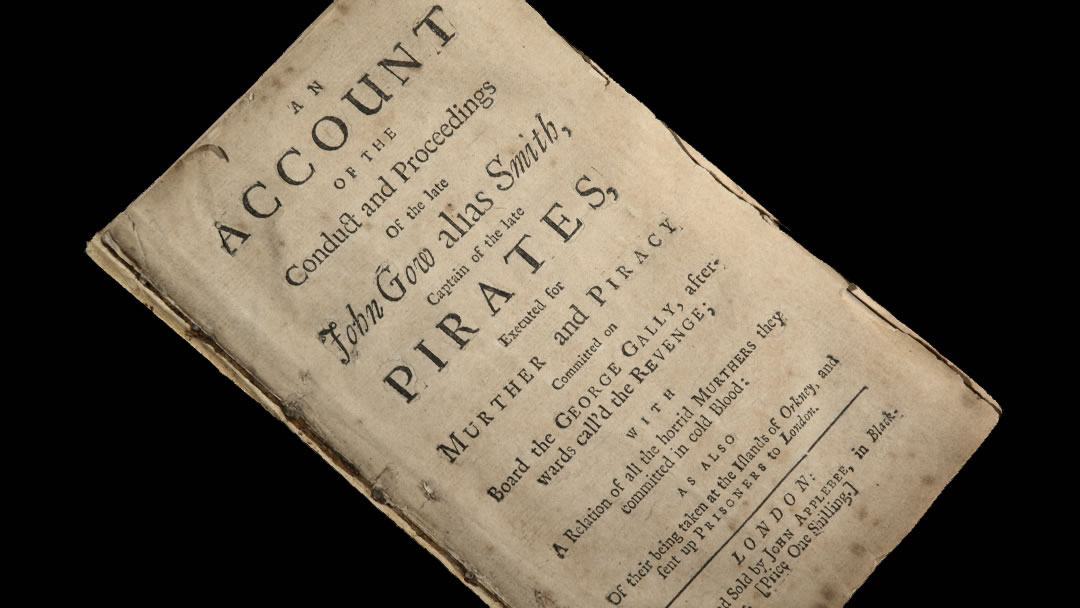
The book is Daniel Defoe’s fictional account of Orkney Pirate John Gow’s violent life and death, one of only five copies known to exist and part of a collection of several items relating to the pirate in Stromness Museum. The title of the book is quite a lengthy one:
An Account of the Conduct and Proceedings of the late John Gow alias Smith, Captain of the late Pirates, Executed for Murther and Piracy Committed on board the George Gally, aftewards call’d the Revenge; with A Relation of all the horrid Murthers they committed in cold Blood; as also of their being taken at the Islands of Orkney, and sent up Prisoners to London.
Tales of John Gow’s mutinous and murderous exploits became notorious and were said to be the inspiration for Sir Walter Scott’s novel The Pirate.
John Gow’s infamy has prevailed to the present day, and he now lends his name to an Orkney distillery that produces every pirate’s favourite tipple, Rum. As well as Defoe’s book we also have Gow’s telescope and flintlock pistol on display.
3. A tin fiddle
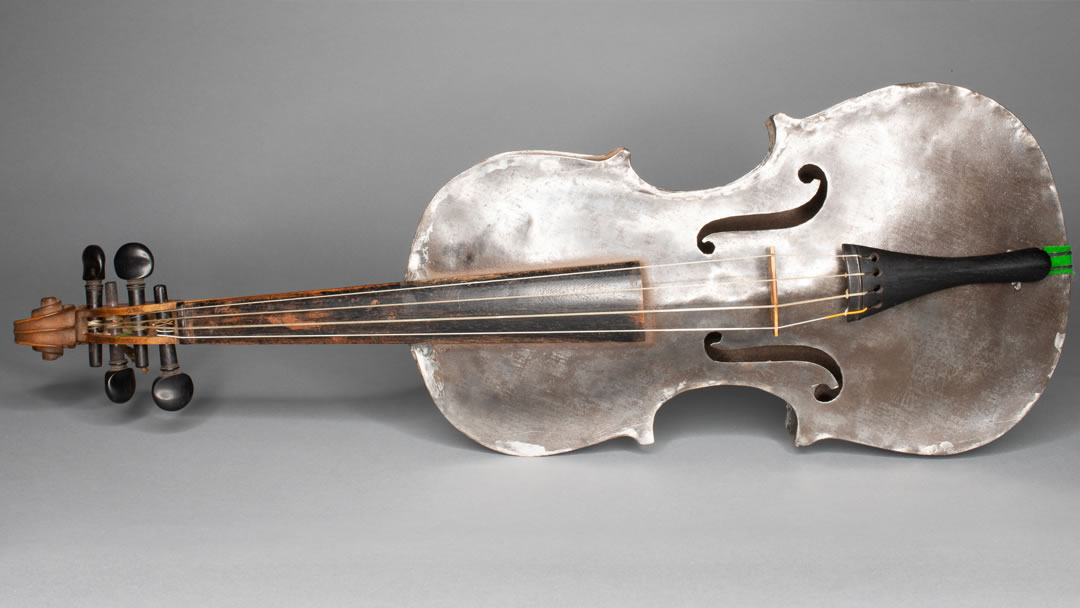
This unusual metal fiddle was made by James Scarth Foubister, of Deerness, after his own was smashed at sea. A blacksmith by trade, Foubister decided to make himself a new fiddle from tin in order to withstand the rigours of life on board a herring fishing boat. This fiddle was more recently played by Jennifer Wriggly, alongside the wooden one that once belonged to explorer Dr John Rae, which is also in Stromness Museum.
4. Battlecruiser SMS Derflinger seal from the scuttled German Fleet
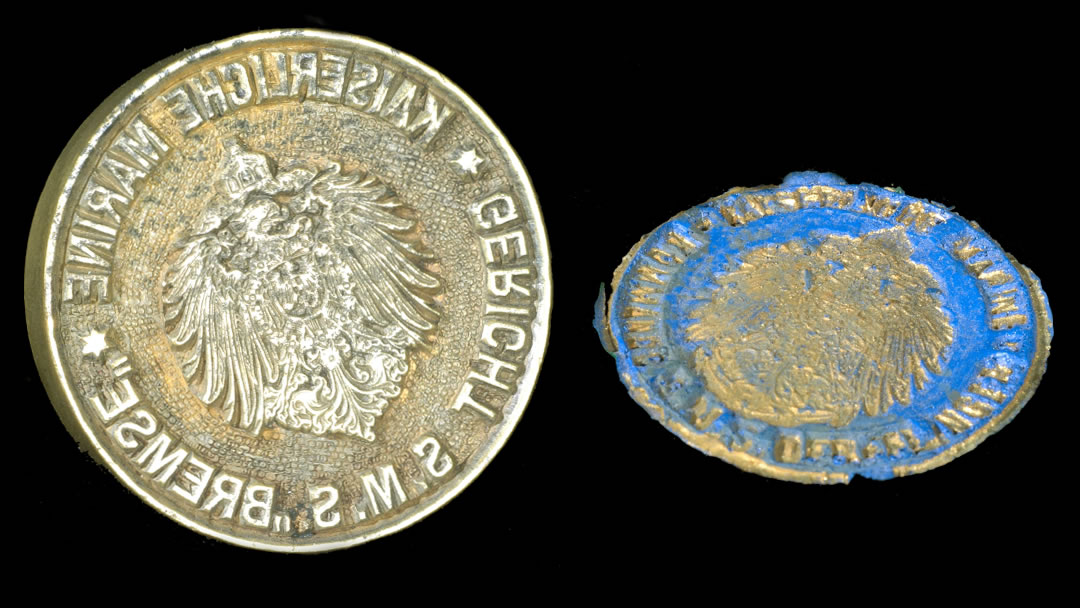
Stromness Museum contains a wealth of items rescued from the German naval fleet of World War I, that was interned in Scapa Flow after the Armistice and purposely scuttled on 21 June 1919. This deliberate act of sabotage came from the order of Rear Admiral von Reuter, who was unaware that the Armistice had been extended and was keen to avoid the fleet becoming ‘spoils of war’. A total of 52 warships were sunk, the biggest loss of shipping in a single day in history, and the nine German sailors killed in the commotion were tragically the last casualties of World War I.
One of the salvaged items from the German fleet is this impression from the seal of the German battlecruiser SMS Derfflinger, one of many scuttled warships that were later raised for scrap metal. The original seal stamp is in Germany.
5. HMS Royal Oak steam pinnace ornamental dolphin
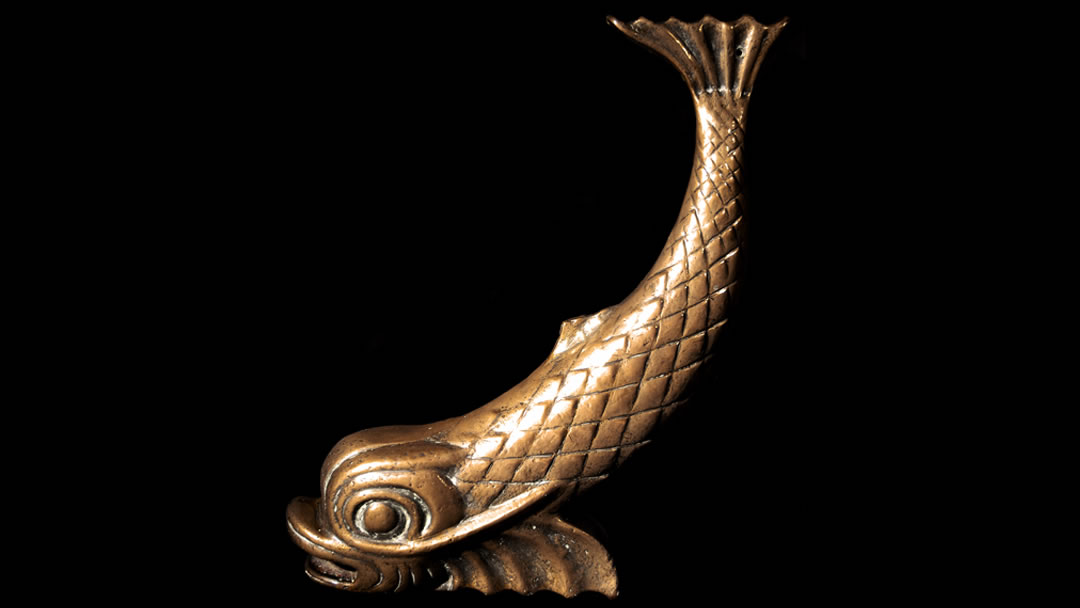
This bronze ornamental ‘dolphin’ is from a steam pinnace carried by the ill-fated HMS Royal Oak. In the early hours of 14th October 1939, the Royal Oak was torpedoed at anchor after the German submarine U-47 penetrated Scapa Flow’s defences. The Royal Oak sunk within minutes, killing 833 of the 1,234 men and boys on board. It’s wreck is a designated war grave marked by a buoy and a commemoration ceremony is held there each year.
In addition to two of these decorative ‘dolphins’, Stromness Museum holds Royal Oak artefacts such as sailors’ medals, handwritten letters, other personal items, and a mechanism from one of the G7e torpedoes fired by U-47 on that dreadful night.
6. Arctic Medal for Arctic Exploration
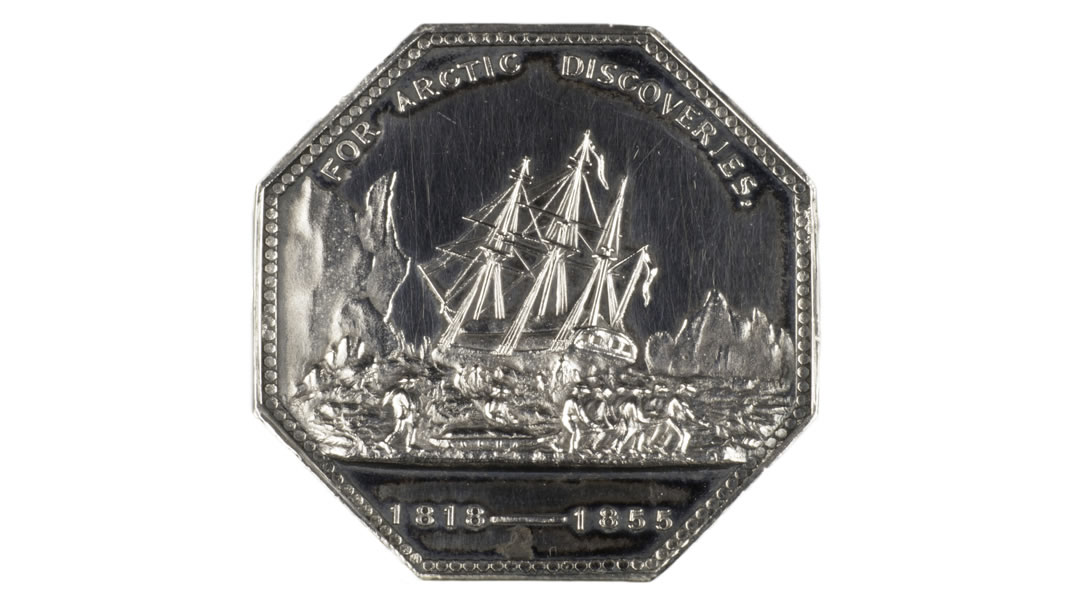
We have two Arctic Medal medals on display at the Museum. One is now understood to be the missing 1st Arctic Medal awarded posthumously by the Royal Navy to Arctic explorer Sir John Franklin in 1857. The other Arctic medal in our collection was awarded to Thomas Work of Shapinsay who was an Able Seaman on HMS Erebus, lost on the Franklin expedition of 1845.
Captain Sir John Franklin of HMS Erebus and HMS Terror began his search for a navigable Northwest Passage in Arctic Canada in 1845. The Franklin Expedition met with disaster after both ships became icebound. The crews dragged their sleds south in search of food and rescue, but ultimately none survived and there is evidence to suggest that some resorted to cannibalism in their desperation to survive.
John Franklin’s widow Lady Jane Franklin devoted herself to finding out her husband’s fate. The tragedy was finally confirmed by Orcadian explorer Dr John Rae in 1854 who worked for many years for the Hudson Bay Company.
7. Dr John Rae’s Octant
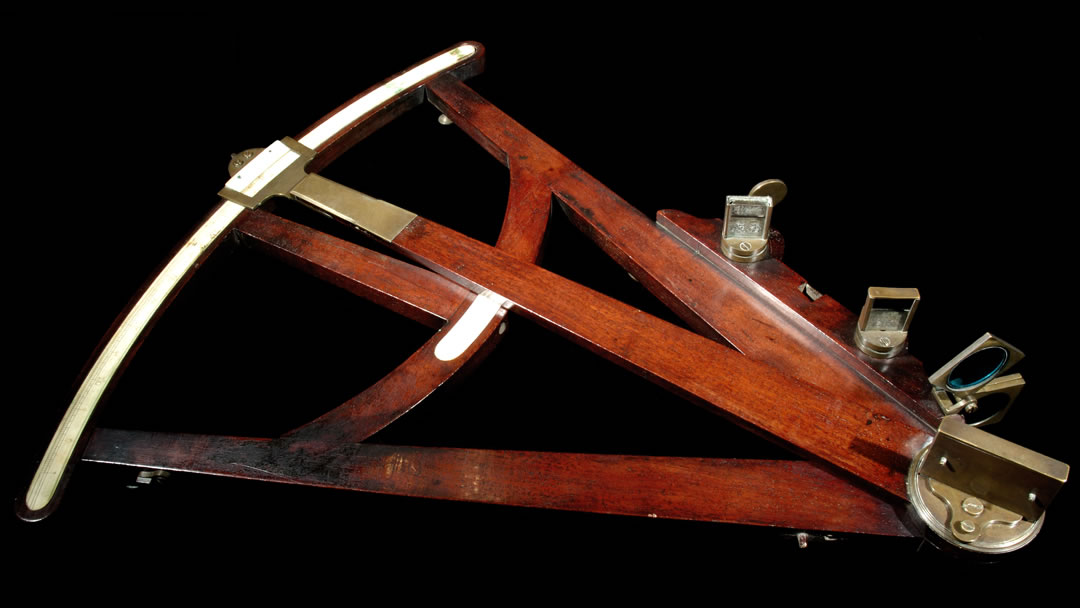
Shortly after qualifying as a doctor in 1833, John Rae followed in the footsteps of many young Orkney men and joined the Hudson’s Bay Company, a fur-trading business in Canada. The conditions were harsh, and John Rae was soon dealing with outbreaks of typhoid and scurvy. But where many men struggled, Rae thrived.
Carefully studying seafaring and the survival skills of local Inuit people, John Rae flourished in the freezing climate and soon found himself exploring the Arctic in search of the fabled Northwest Passage and later, the fate of the missing Franklin Expedition. During these voyages John Rae used this octant, a measuring instrument used in navigation and map-making.
8. Hugh Miller’s Homosteus milleri fossil
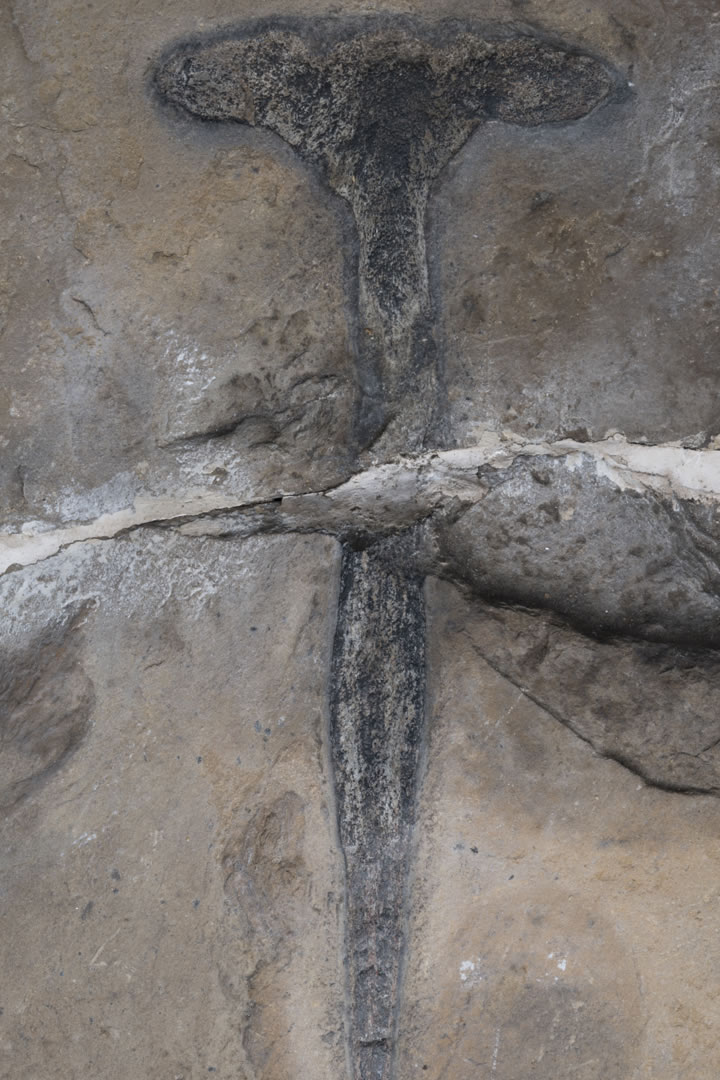
This ancient fish fossil is ‘Homosteus Milleri Traq.’, named after its finder, the self-taught Scottish geologist and writer Hugh Miller (1802 – 1862). Hugh Miller’s discovery in 1846 in ‘Lake Orcadie’ of the Devonian period, led him to write Footprints of the Creator, Or, the Asterolepis of Stromness’ a masterpiece of popular science. The book became a formative influence on Darwin’s The Origin of Species.
Hugh Miller was an honorary member of the Orkney Natural History Society and the fossil, which he described as ‘in all probability the oldest vertebrate yet discovered in Orkney’, remains a star exhibit in Stromness Museum today.
9. Captain Rousey’s punch bowl
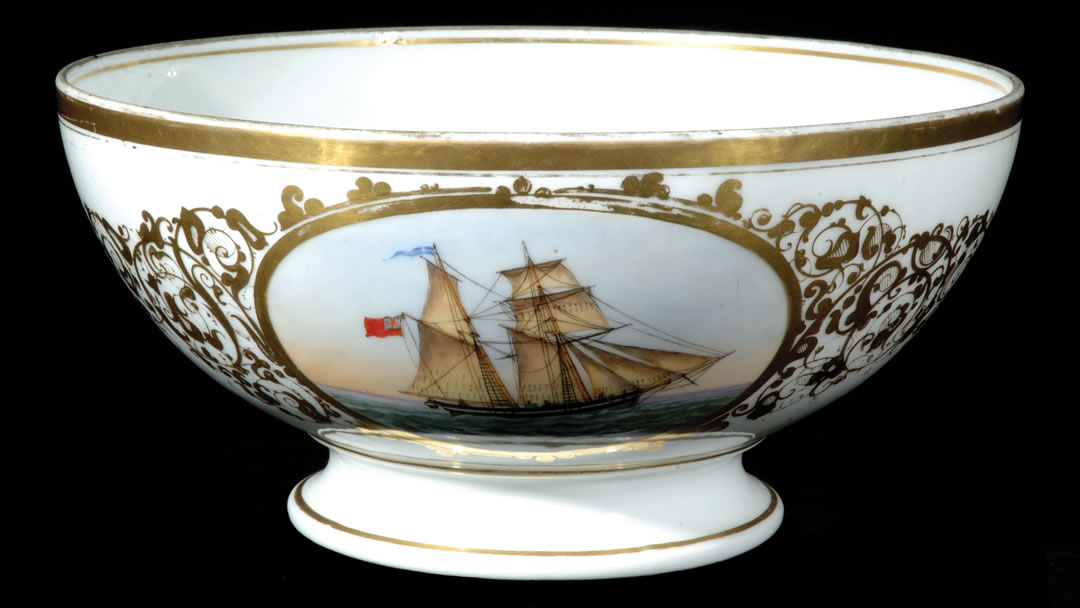
This porcelain bowl was commissioned by Captain Alexander Rousey, a Stromness merchant who spent his life trading across the North Sea and the Baltic. Captain Rousey carried cargo such as oats, grain, timber and coal with his crew and teenage son ‘Alic’, who sailed with him while he was training to be a seaman in the 1870’s.
The bowl is inscribed Capt. A Rousey The Isabella of Stromness. It is one of two punch bowls Captain Rousey had made in Denmark to celebrate his trading vessels Isabella and Annie. Alic wrote regular letters home during his travels with his father and once declared that ‘the Annie, with the double topsail and royal yardarms takes the shine out of them all…’.
10. Scrimshaw Sperm whale tooth
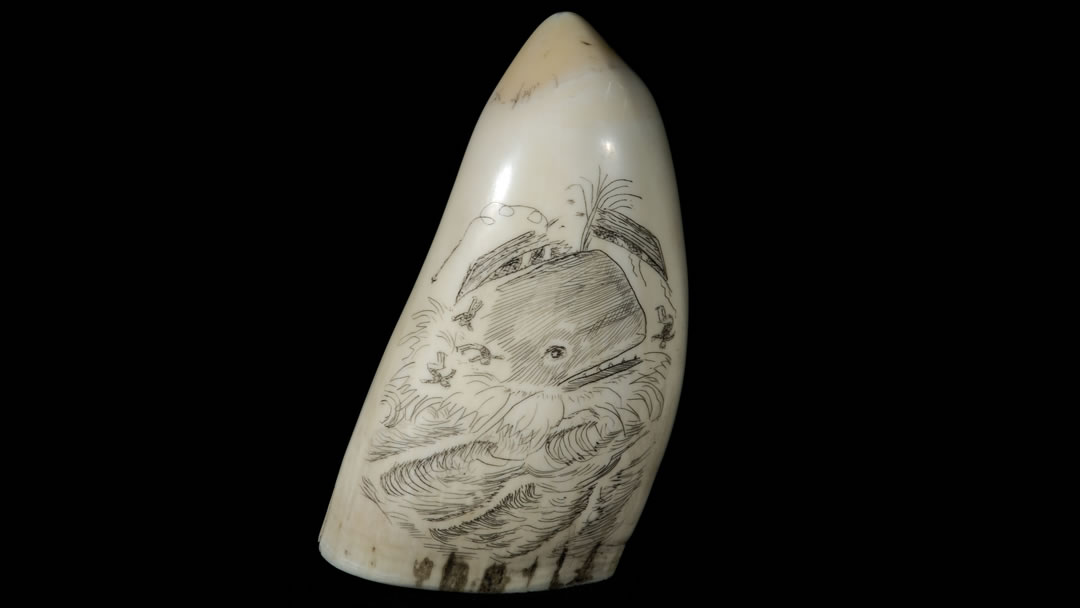
In the nineteenth century Arctic whaling became a lucrative industry for the merchants and young men of Stromness. Whaling ships, particularly those from the Dundee and Hull whaling fleets, would call into Stromness to take on board supplies and recruit crew before heading out to the Davis Straits whaling grounds of the ‘Nor’west’.
Some whalers returned with souvenirs, other than the usual frostbitten fingers and ears, such as this scrimshawed tooth of a sperm whale. On the lengthy voyages crewmen would often carve scrimshaw scenes in bone or tusk to while away their spare time. There are detailed carvings on both sides of this piece. One shows a fully rigged sailing ship passing a polar bear on a piece of floating ice, the other has a dramatic scene showing a whale rising from the deep and smashing men out of their harpoon boats.
Top tip: After your visit, enjoy some Orkney ice-cream on the pier behind the museum and watch the ships and birds go by.
 By Nicky Getgood
By Nicky GetgoodStromness Museum Custodian and Welsh ferry-louper who enjoys scribbling, walking, mothering and exploring.
Pin it!